SOIL HEALTH CONCEPT
Soil testing and fertilizer recommendation basically involves
need based fertilizer use with little thrust on the microbial
diversity a crucial factor in maintenance of soil health. A
reorientation of soil test advisories including soil
health/quality parameters is of top most significance. Knowledge
of soil health parameters that promote sustainable productivity
growth with zero land degradation have to be identified. An
understanding of the soil health concept involving physical,
chemical and biological properties is therefore important from
the point of view of identifying appropriate diagnostic tests
that aid development of soil health management strategies.
Soil health/quality refers to the physical, chemical and
biological features of a soil that are essential for long term
sustainable agricultural production with minimal environmental
impact. Although, it cannot be measured directly, soil health
can be inferred by measuring specific properties like pH,
electrical conductivity, organic matter content, cation exchange
capacity, base saturation and by estimating soil status of plant
nutrient elements (fertility) and microbial activity as well as
microbial diversity.
Healthy soils occur when their
biological, chemical, and physical conditions are all optimal,
enabling high yields of crops. When this occurs, roots are able
to proliferate easily, plentiful water enters and is stored in
the soil, the plant has a sufficient nutrient supply, there are
no harmful chemicals in the soil, and beneficial organisms are
very active and able to keep potentially harmful ones in check
as well as stimulate plant growth. Essential functions and
services generally expected from healthy soils are given in
figure
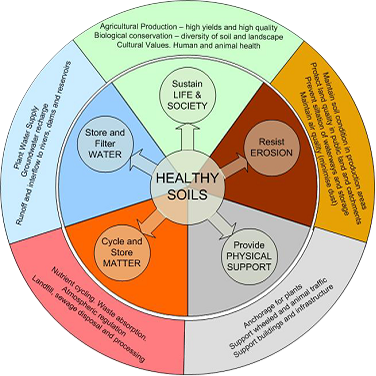
Maintenance of soil health/quality brings about the following benefits
- Better plant growth and higher yield
- Reduced risk of yield loss
- Reduced cost of cultivation and input cost (fertilizers and plant protection cost)
- Maintenance of environmental quality
- Increased microbial population and diversity
CHARACTERISTICS OF A HEALTHY TROPICAL SOIL
Physical
- Good soil tilth- Optimum physical properties of the soil for crop production
- Soil depth - Sufficient depth for root proliferation and function for plant growth
- Soil drainage - – Optimum to remove excess water and retain adequate soil moisture for plants
Chemical
- Organic matter- Adequate levels, especially, the labile carbon pool to meet energy requirements for micro organisms and enhancing microbial activities for sustaining soil health
- Soil reaction (pH)- Maintenance of optimum pH for increased nutrient availability and microbial activity
- Electrical conductivity- Optimum levels to avoid salt injury to plants and for increased nutrient availability and microbial activity
- Nutrient supply- Adequate levels of plant available nutrients in soils
PLANT NUTRIENT DEFFICIENCY SYMTOPMS OF MAJOR CROPS VIEW MORE
Biological
- Microbial activity- Large population of beneficial organisms for nutrient cycling, decomposition of organic matter, maintenance of soil structure and biological suppression of plant pests
Commonly used soil indicators
- Soil organic matter- labile carbon pools
- Soil physical properties - structure, texture, depth, Infiltration, bulk density, water holding capacity and porosity
- Soil chemical properties - pH, EC and available nutrients (N, P, K, Ca, Mg, S, Fe, Mn, Cu, Zn and B)
- Soil biological properties- microbial biomass C and N, potentially mineralizable N and soil respiration
SOIL BIOTA


The soil microbes include a wide range of organisms viz: microflora represented by (bacteria, fungi, algae and actinomycetes), microfauna (nematodes, protozoa) and mesofauna (collembola, mites).all these organisms together are involved in a multitude of functions like decomposition of organic matter (crop residue), mineralization and recycling of nutrients, fixation of nitrogen, detoxification of pollutants, maintenance of soil structure, biological suppression plant pests, parasitism and damage to plants. They also aids in maintenance of soil resource quality and environmental health in both natural and managed agricultural soils. A diverse balanced and active soil biota could help provide soil conditions necessary for sustainable crop production with little negative environmental effect.
Enhancing microbial activity and soil health
Maintenance of soil health demands a long-term commitment using various combinations of soil management practices that enhance microbial activity. The following strategies will help in sustaining soil health and production of healthy and quality crops
- Add sufficient quantities of organic matter from cover crops and other crop residues as well as from off-field sources like animal manures and composts. Organic materials from various sources have different effects on a soil’s biological, physical and chemical properties and have modifying influence on pest and disease incidence
- Mulching with living vegetation or crop residues protects soils from moisture loss, extremes in soil temperature and allows maintaining population of soil micro and macro organisms including earthworms
- Minimum or zero tillage leaves more crop residues on the soil surface which creates a stable environment, slow turnover of nutrients and encourage more diverse communities of decomposers
- Minimize soil erosion through appropriate management practices to retain top soil rich in organic matter which is crucial for maintaining soil health
- Soil acidity amelioration through liming is necessary to maintain soil pH at optimum levels to enhance nutrient availability, reduce toxicity and prevent soil borne diseases
- Adopt the best management practices to supply nutrients to plants based on specific pathogen/nutrient interaction. Routine use of soil and plant tissue tests will help to regulate nutrient supply based on soil/crop needs and provide a balanced dose. Vegetative resource management by limiting external inputs, and use of indigenous organic matter supply and nutrient recycling will help to improve microbial diversity
- Replace agrochemicals with more resource-efficient, environmentally safe practices for managing nutrients and reducing pest and disease incidence
ORGANIC AGRICULTURE
In its bid to re-establish the age-old traditional farming
practices, the Government is taking up the task of turning
Kerala into an organic State. The project initiated in Kasaragod
District is proposed to be implemented in a phased manner
through 'Organic Clusters' identified in various panchayats
covering different crops. These Clusters in turn will convert
potential areas to organic panchayats.
In Organic
farming, soil fertility is maintained primarily based on the use
of on farm organic inputs like farmyard manure, compost,
oilcakes, green manures, biogas slurry, crop residues and
biofertilisers.
Organic agriculture is not limited to
crop production alone, but also encompasses animal husbandry,
dairy, poultry, piggery and aquaculture. Judicious blending of
different farming systems will aid in sustaining yield levels,
maintain soil health and overall quality of the environment.
SOIL HEALTH IN ORGANIC AGRICULTURE
Basic objective of ‘organic agriculture/organic farming’ is the
creation of a healthy and fertile soil on which the rest of the
farm agro ecosystem is built. Organic farming is primarily a
soil building process. Recycling of biological wastes back into
the soil is the essential principle which provides microbial
decomposers of their food supply, which in turn enhances the
release of essential nutrients by decomposers. The greater use
of organic manures will tend to create conditions of micro
nutrient deficiencies which can be alleviated through inorganic
supplements. The guidelines of the National Programme for
Organic Production (NPOP, 2005) issued by the Government of
India and USDA regulations (2012) in organic farming system,
permit the use of a variety of inorganic fertilizer supplements
to supply micronutrients after ascertaining needs based on soil
tests or plant tissue analysis. Therefore, soil test based
nutrient management should form an integral component of the
organic farming strategies.
The following strategies
will help to improve soil health and productivity
NUTRIENT MANAGEMENT
In organic farming, soil physical, chemical and biological
properties are maintained primarily based on the use of onfarm
organic inputs like farmyard manure, compost, oilcakes, biogas
slurry crop residues, green leaf manures and in situ green
manuring. Besides, approved mineral bearing rocks,
biofertilisers and Vrikshayurveda products can also be used for
improving soil health and maintaining productivity.
ROCK DUST AND REMINERALISATION
Application of rock dust/minerals in tropical environments
brings about greater dissolution of rocks and minerals under
high temperatures and moisture regimes. Use of rock dust in
conjunction with composting, green manures, bioinoculants,
microbes and mycorrhiza increases the solubilisation on
nutrients and availability to plants.
USE OF BIOCHAR
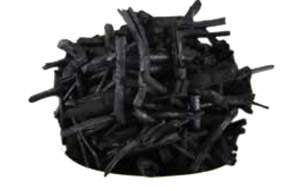
Biochar is a fine-grained, carbon-rich, porous product remaining
after plant biomass has been subjected to thermo-chemical
conversion process (pyrolysis) at temperatures of 350–600°C in
an environment with little or no oxygen. Most of the crop
residues in the farm like straws of paddy, sugarcane trash,
leaves, fibrous materials, roots, branches and twigs.
Agro-industrial residues like rice husk, coir pith, coffee husk,
cassava peels, bagasse, tea waste, casuarina leaf litter,
shells, cashew nut shell, coconut husk etc. can be used for
biochar preparation. Biochar has a wide range of properties and
uses as a soil amendment, conditioner and enhances water
quality, nutrient use efficiency, absorption of toxic
constituents and improvement in soil physical properties and
microbial population and resistance to infestation by soil borne
fungus, nematodes and insects
Biochar can be produced
at the farm level by the heap and drum method or by using low
cost biochar kiln at community level. Heap method is
comparatively easy, low cost and can be done among farmers.
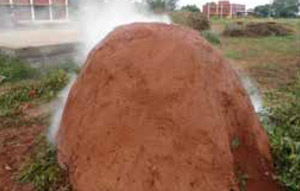
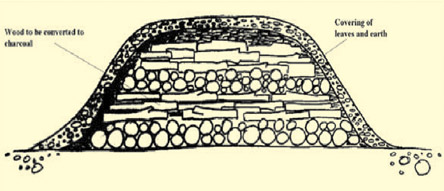
METHOD AND RATE OF APPLICATION
Like any other organic amendments, biochar can be applied to
soil by different methods including broadcasting, band
application, spot placement, deep banding or deep placement.
Mixing of biochar with composts and manures may reduce odours,
and improve nutrient performance over time due to slower
leaching rates. Mixtures may be applied for uniform topsoil
mixing, or top-dressed in tree plantations without incorporation
Given the variability in biochar materials, nature of crop and
soils, users of biochar should consider testing several rates of
biochar application on a small scale before setting out to apply
it on large areas. Experiments have found that rates between
5-50 t/ha have often been used successfully. Trials for
standardization of doses for various crops in the state are to
be conducted.
BIO FERMENTS
Bio ferments are products obtained from the decomposition of
organic matter. In this process effective microorganisms are
important because they break down the organic matter thus
releasing nutrients for plant growth. Bio ferments can be
prepared in the farm at a low cost using animal dung and other
crop residues from banana and legumes.
Production of
compost using Effective Mountain Micro organisms is an
alternative for small scale farmers to regenerate the fertility
of their soil. This technology was implemented for the first
time in Japan 20 years ago. This practice requires extraction of
microorganisms from their natural habitat (nearby natural
forest) and are multiplied using locally available inputs and
easy techniques. These microorganisms are then incorporated in
the preparation of organic solid fertilizers (Bokashi) and
Bioles (fermented liquid fertilizers), in order to regenerate
deteriorating soil health due to faulty agricultural practices
Bokashi – A fermented mixture of solid organic materials acted
upon by microorganisms to realize nutrients that are important
for crops. When applied to soil, the microorganisms help to
restore soil life and minimize incidences of crop diseases thus
producing healthy crops with vigorous growth and high yields.
Bioles - A fermented liquid organic fertilizer produced from
organic liquid material acted up on by effective Mountain
Microorganisms, such as yeast, fungi and bacteria. The liquid
organic matter is then transformed into plant elements,
vitamins, organic acids and other substances for plant growth.
It is applied as foliar spray on crop and the nutrients are
absorbed immediately. Enrichment of bokashi and bioles can be
done by adding the calculated quantities of the desired nutrient
(Phosphorus, potassium, calcium, magnesium, borax, silicate etc)
either alone or in combination.
VRIKSHAYURVEDA
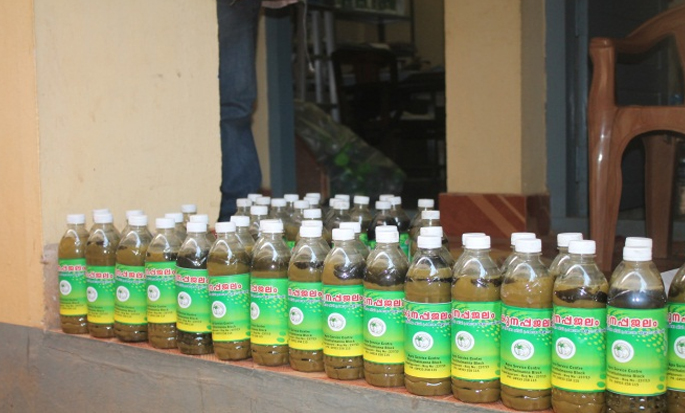
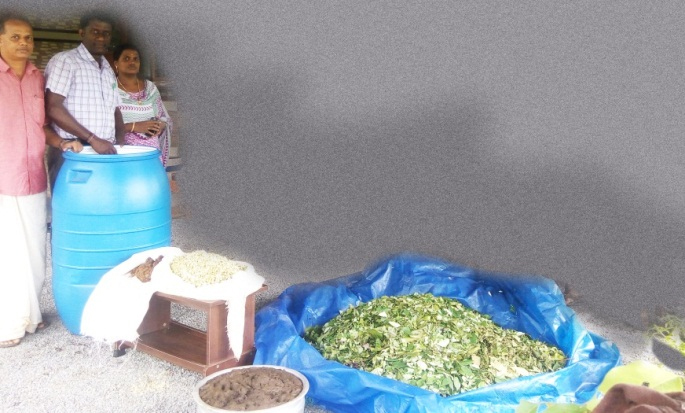
Vrikshayurveda is the art of maintaining the health, healing and
productivity of plants. It is a scientifically unexplored area
and forms part of the healing art of India exclusively practiced
by Ayurvedic scholars for improving yield and restoring the
quality of soil and environment.
A number of liquid bio
fertilizers like Kunapajala referred in Surapalala’s
Vrikshayurveda have been used for soil quality improvement and
nutrient supplement for crops. These Vrikshayurveda
prescriptions are gaining popularity among many organic farmers
of the state for soil quality improvement, as nutrient
supplements and for pest and disease management. Preparation of
Vrikshayurveda prescriptions Kunapajala is being successfully
carried out by self help groups to meet the demands of farmers
RENEWING THE SOIL WITH SEA SOLIDS
Diluted seawater (DSW) is a simple yet vital input used in
Natural Farming as a source of mineral nutrition for the
production of a variety of fruit and vegetable crops, as well as
for lawns, pastures, and flowers. Seawater combined with other
inputs stimulates the growth of beneficial microorganisms that
can help to suppress diseases. Sea minerals alkalize and
mineralize the soil, which makes for a healthy soil and soil
life. Infestation by soil borne insects, fungi and other
pathogens are reduced to a considerable extent.
The
novel initiatives mentioned above are cost effective, can be
carried out at the farm level and suited to the agro ecological
conditions of Kerala. These techniques have to undergo field
level trials on various crops for further validation and
standardization before large scale dissemination to farmers.
Ecological intensification of soils is a promising approach to
enhance agricultural sustainability through the enhancement of
soil biodiversity using targeted agronomic management
techniques. Organic agriculture also offers potential for
ecological intensification which can reverse the degraded soil
eco system through alternative strategies for promoting
biodiversity. Locally available ecological approaches have to be
adopted through community level participation.
Root Health
Effective foraging space of the plant roots, which is determined
by the depth and lateral spread of the root system significantly
influences the growth and yield of crops. Maintenance of a
healthy root system is important from the point of view of
proper anchorage, uptake of water and nutrients which are
crucial for improving production and productivity of crops. It
has been estimated that 80% of all plant problems start with
soil/root problems. The roots of most plants are prone to attack
by pathogenic fungi and nematodes, but the effects of such
organisms may go unnoticed unless the attack is sufficiently
severe to cause crop failure.
The strategy of seed
treatment to protect plants from yield-reducing diseases by
pathogenic organisms is gaining popularity. This practice
enables development of healthier and stronger root systems,
thereby helping the plants grow to their maximum genetic
potential. Stronger, healthier roots can better uptake water and
nutrients, two of the most critical resources a plant needs.
This leads to better crop development at critical early stages
and under a wide range of conditions. More robust root systems
help produce stronger stems and foliage that better withstand
environmental stress, especially in challenging climates. They
protect the genetic potential of the crop and, ultimately, lead
to improved yield consistency.
Root health assessment and rating
In root health assessment, the quality and function of the roots
as estimated by observing the size, color, texture and absence
of symptoms of damage by root pathogens. Appropriate indicator
plants are grown in a portion of the soil sample in the
greenhouse for a definite period to assessing the above
parameters and the extent of damage by major pathogens. The
plants are removed from their containers and the roots washed
under running water and rated for root health on a scale to
assess the extent of damage.
The basic protocol for
assessing root health for various crop production systems in
Kerala has to be standardized and it should be a component of a
comprehensive soil health assessment report.
Soil health strategies for sustaining crop production in Kerala
The crop production scenario in Kerala is confronted with serious problems in respect of all the food crops as is evident from the steady decline in yield observed over the years. Soil degradative processes like water erosion, indiscriminate fertilizer use and low fertilizer use efficiency have been cited as the major reasons for the low productivity of soils and crops. The project on “Soil Test Based Nutrient Management Plan for Agro-ecosystems of Kerala” implemented by the Department of Agriculture also brought to focus the soil fertility constraints of the State in respect of acidification, high levels of phosphorus, extensive and widespread deficiency of Ca, Mg and B and deficiency of sulphur, copper, and zinc in limited areas. The current situation recognizes the need for reorientation of the soil testing including soil health parameters and initiate appropriate corrective measures to restore soil health, improve production and productivity of crops and sustain yield levels. The following issues and field level interventions are suggested for sustaining soil health and crop production.
- Soil testing services now are undergoing a major shift in emphasis from testing of individual nutrient elements required in plant nutrition to a holistic approach to encompass soil health. Reorientation of soil test parameters including physical and biological parameters are also needed for assessing soil health.
- The alarming situation on soil acidification and nutrient imbalances and reduction in carbon stock brought out in the soil fertility project along with physical degradative processes of water erosion, anthropological activities and soil moisture stress have deleterious effects on the soil biological community also needs specific attention.
- Studies on rhizosphere, below ground biodiversity and root health are areas which have not received any attention. In-depth studies on these areas have to be taken up to identify problems on the declining trends in the soil productivity and crop production.
- Linkages have to be established with agricultural research institutions to evolve soil health indicators relevant the soil and crop situations of the State and for appropriate soil health management interventions.
- The recent studies using VAM and Trichoderma in vegetable production have created renewed interest on bio fertilizer use. Several successful on farm production units operated by Self Help Groups are extending this cost effective technology to farmers.
- Ecological soil management practices like organic matter management through organic manures, green manuring (including in situ), cover cropping, crop rotations, residue management and restricted tillage have to be given priority to improve organic matter status, carbon sequestration, microbial biodiversity and soil physical condition which are all vital for sound soil health.
- Best management practices have to be identified for each agro ecological unit and implemented in the field so as to reverse soil degradation, promote economic benefits in production, and improve food and nutritional security and health of the people.
GREEN MANURES AND LEGUMES IN CROPPING SYSTEMS
The age old practice of incorporation of green manure and in
situ green manure crop not only improves nitrogen economy but
also has added benefits on soil health. In situ green leaf
manuring with cow pea is a common practice in coconut gardens in
many districts of Kerala
Green manure crops are
generally fast-growing and when ploughed into the soil, while
still green, return many plant nutrients to the soil and also
improve soil structure.
Common green manure crops
cultivated in Kerala
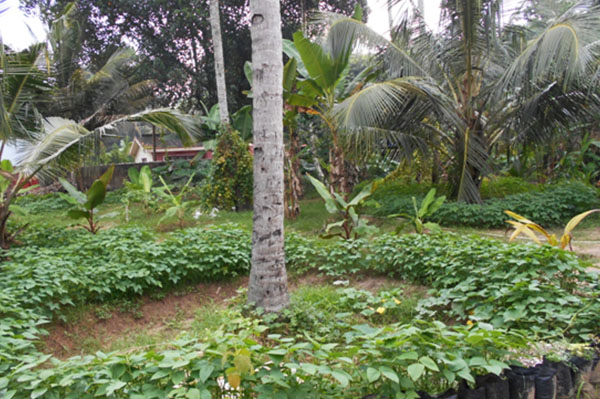
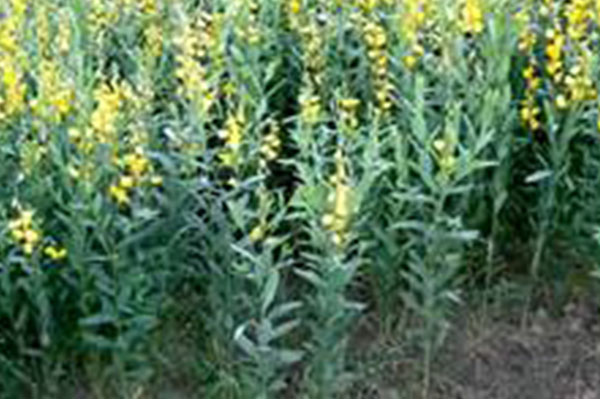

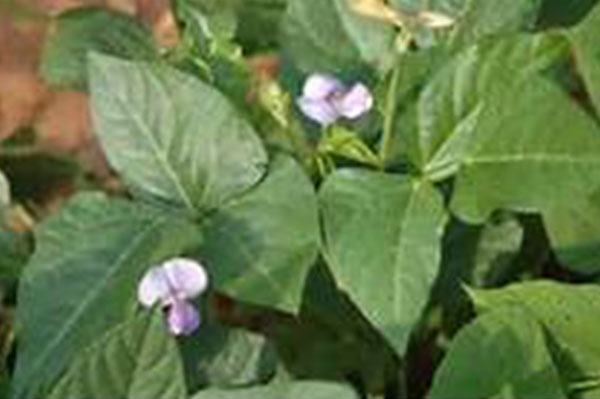

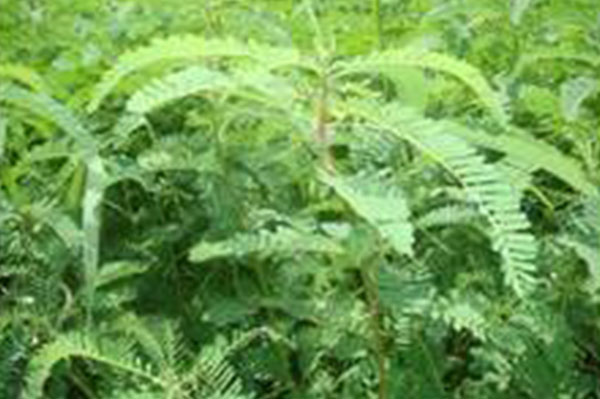
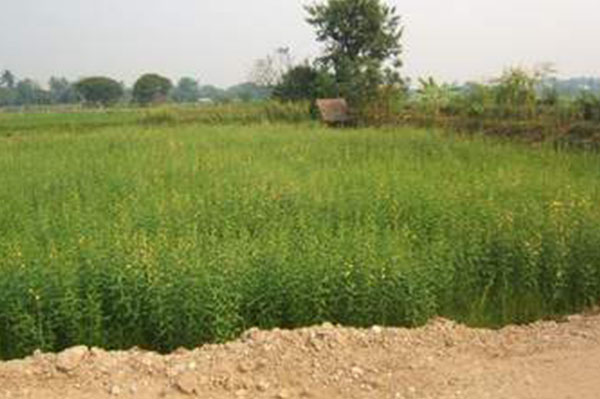


COVER CROPS
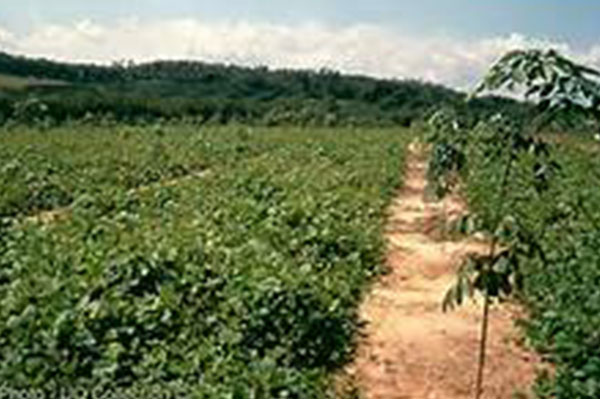
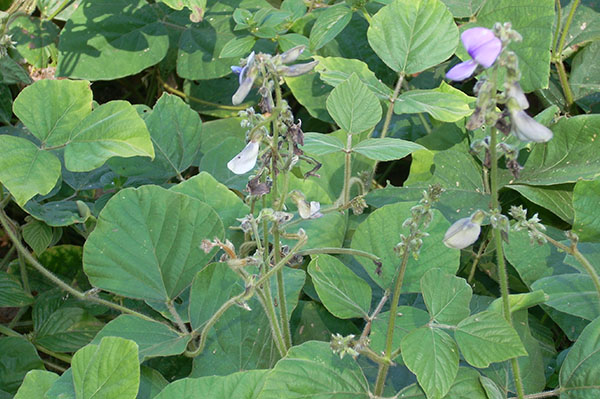
Cover crops like Pueraria phaseoloidea and Mucuna
brateata are grown specifically to help maintain soil fertility
and productivity. They prevent soil erosion by acting as a
ground cover and by living roots that hold on to the soil. They
also serve as organic matter source to topsoil. They are usually
ploughed on the surface or incorporated into the soil before
they mature and hence decompose rapidly in the soil. They also
increase the population of beneficial fungi like mycorrhiza and
other microbes.
Contact Us
+ 91 471 2527567, + 91 471 2700777

© 2019 | System conceived,designed and implemented by IIITMK


